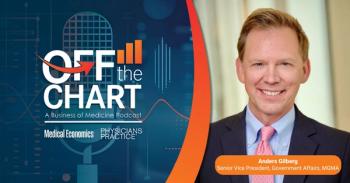
Ensure Your Practice is Prepared for New Sunshine Act Rules
Some of the key items outlined in the Physician Payment Sunshine Act final rule and how physicians can prepare for enforcement.
If you are a physician who receives benefits from pharmaceutical, biological, medical supply, or medical device manufacturers, you are likely to be interested in the long-awaited final rule implementing the Physician Payment Sunshine Act, which came out Feb. 1, 2013.
The general goal behind the Sunshine Act is to increase transparency so that consumers will better see and understand the relationships between physicians and manufacturers. Under the final rule, manufacturers will begin tracking payments, which include the transfer of anything of value made to physicians and teaching hospitals, by Aug. 1, 2013. Manufacturers will then report the tracked data to CMS by March 31, 2014, and CMS will start to post the data online by Sept. 30, 2014. There are some exceptions and delays in reporting and posting deadlines related to certain areas, such as payments for research.
For payments covered under the final rule, CMS lays out the exact information that it will publicly disclose about physicians, which will include:
1. Physician’s name and business address;
2. Physician’s NPI, state license number, and specialty;
3. Amount and date of the benefit received by the physician;
4. Form of the benefit;
5. Nature of the benefit (i.e. consulting fee, food and beverage, education, research, royalty or license, etc.);
6. Name of the covered product, if the payment is for marketing, education, or research related to a specific drug, device, or biological;
7. An indication as to whether the benefit is subject to delayed publication (which is available for certain types of research payments);
8. If the benefit is made to an entity or individual at the request of (or designated on behalf of) a covered recipient, the name of the other entity or individual;
9. An indication as to whether the benefit was provided to a physician holding an ownership or investment interest in the manufacturer; and
10. If desired, a statement that provides additional context for the benefit.
The final rule also clarifies that even if payment is made to a group practice, the manufacturer must assign the remuneration to the individual physicians who actually benefit from the payment. Accordingly, benefits cannot be reported in the name of all members of the practice.
The reporting obligations of manufacturers may seem incredibly inclusive, but the final rule does carve out several exceptions, including: payments of less than $10 (unless payments exceed $100 annually); educational materials and samples intended for patient use, which could include things like wall charts and anatomical models; payments for speaking at CME programs; food/drinks made available at large events where it’s difficult to discern who consumed the food and drink; payments made in the context of personal, non-business relationships; and discounts or rebates given to physicians. The majority of physicians will likely fall into this category, and will not receive benefits that will be disclosed to CMS.
Another important development in the final rule has to do with contested reporting. Once CMS receives a benefit report from a manufacturer, CMS will notify physicians named in the report and allow 45 days for a physician to review and dispute the information. Disputes regarding the accuracy of any report must be settled between the physician and the reporting entity. If a dispute is not resolved within 15 days after the 45-day review period closes, CMS will post the manufacturer’s version of the benefit and mark it as disputed.
For my physician clients, I am recommending the following regarding the Sunshine Act:
A. Educate your physicians and staff about the Sunshine Act and develop a policy concerning which benefits from manufacturers will be accepted by physicians in the practice going forward;
B. Question whether any benefits being received (or scheduled to be received) are appropriate and will hold up to increased scrutiny by public and government enforcement agencies;
C. Document all amounts received and maintain detailed records so as to properly dispute reported payments; and
D. Disclose payments received from manufacturers to patients, as may be appropriate.
This is just a brief summary of how the final rule may impact physicians. For questions,
Newsletter
Optimize your practice with the Physicians Practice newsletter, offering management pearls, leadership tips, and business strategies tailored for practice administrators and physicians of any specialty.










